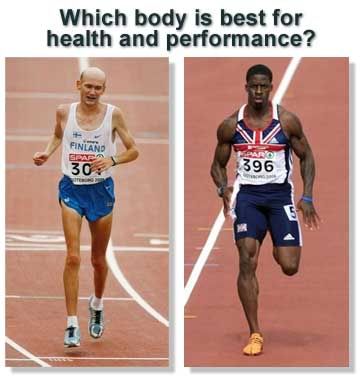15 OCT
Why These Nine Famous Thinkers Walked So Much
 A couple weeks back, I wrote about how integral walking is to being human. And over the years I’ve written about the health benefits of walking, how and why you should walk barefoot, and even a definitive guide on the subject. In other words, I’m a huge proponent of walking and I think just about everyone who’s able should do more of it. But I’m not the only one that finds daily walks critical to health, energy, mental clarity and, ultimately, at least in some part, my success as a human being. Many of the most accomplished and creative people throughout history have also found walking to be an integral part of their daily routines and key to their success as artists, creators, writers, musicians, thinkers, and human beings.
A couple weeks back, I wrote about how integral walking is to being human. And over the years I’ve written about the health benefits of walking, how and why you should walk barefoot, and even a definitive guide on the subject. In other words, I’m a huge proponent of walking and I think just about everyone who’s able should do more of it. But I’m not the only one that finds daily walks critical to health, energy, mental clarity and, ultimately, at least in some part, my success as a human being. Many of the most accomplished and creative people throughout history have also found walking to be an integral part of their daily routines and key to their success as artists, creators, writers, musicians, thinkers, and human beings.
Let’s look at how some of these folks used walking to improve their work:
Aristotle
Aristotle, the famous Greek philosopher, empiricist, and pupil to Plato, conducted his lectures while walking the grounds of his school in Athens. His followers (who quite literally followed him as he walked) were even known as the peripatetics – Greek for meandering or walking about. Ah, to witness one of history’s greatest minds utilizing the cognitive benefits of moving while thinking must have been incredible.
William Wordsworth
The poet with the most fitting surname ever, William Wordsworth walked nearly 175 thousand miles throughout his life while maintaining a prolific writing career. He managed these two seemingly opposing habits for two reasons. First, being shorter (but not necessarily easier) than novels, poems take less actual writing time to produce. Second, Wordsworth’s walking was writing, in a way. As he saw it, the act of walking was “indivisible” from the act of writing poetry. Both were rhythmic, both employed meter. He needed to walk in order to write.
Man, I feel like I’m in English lit class all over again.
Charles Dickens
Charles Dickens, author, social commentator, walker? Yes. After writing from 9 in the morning to 2 in the afternoon, he would go for a long walk. A 20- or 30-miler was routine for him. When Dickens couldn’t sleep at night – which was often – he’d crawl London’s streets until dawn. Dickens walked so much that his friends worried, figuring he had a mania for walking that bordered on pathology. But clearly, the walking worked; Dickens was prolific, writing more than a dozen major and well-regarded novels, several short story collections, a few plays, and even some non-fiction books.
According to the man himself, if he couldn’t walk “far and fast,” he would “explode and perish” from the psychological burden of remaining still. I bet a treadmill desk would have blown his mind (and brought us even more works). Actually, it might not have worked for him. The walking was so important for Dickens because it meant he wasn’t writing, the act of which he found quite miserable and difficult. Walking was relief. Without the walking, he’d probably have gone mad.
Henry David Thoreau
Thoreau was a famous saunterer. In the aptly titled essay “Walking,” he comments on the etymology of the word “saunter,” noting that it comes from “the idle people who roved about the country… under the pretense of going à la Sainte Terre,” or the Holy Land. And for Thoreau, walking through nature was a kind of pilgrimage without a destination. His Holy Land was all around him. And as long as he walked, he kept discovering new temples, new places to worship.
John Muir
John Muir was a naturalist who helped preserve Yosemite, Sequoia National Park, and other wild areas from development and private interests. He wasn’t just “a” naturalist. He was the guy who climbed peaks to whoop and howl at vistas, chased waterfalls (take that, TLC), leapt “tirelessly from flower to flower,” and had an entire forest named after him. But here’s the thing about John Muir: he wasn’t whizzing around in his Prius with a “coexist” bumper sticker (nothing against either of those, by the way). He was walking, and hiking, and climbing, and traipsing through the wilds that he considered home.
It wasn’t just that walking inspired his nature writing. It’s that walking was often the only way to access the subject of his writing and passion. In that respect, walking was a utility for Muir.
Nassim Taleb
Taleb’s a contemporary writer, unlike most of these other famous walkers. You can find him trading jabs with critics on Twitter, probably in the last hour. He’s been writing about anti-fragility for many years, about how successful systems and economies and businesses must experience and be able to adequately respond to punctuated, not chronic, stresses and randomness to stay successful and robust. But it wasn’t until he started walking that he realized the same concepts applied to humans. We also need to face intermittent stressors to remain healthy, robust, and anti-fragile, and we require randomness and variation. So, for Taleb, that means some intense strength training every so often, a fair amount of relaxation, and lots and lots of aimless meandering as a foundation.
Patrick Leigh Fermor
I first read about Fermor almost a decade ago in a New Yorker piece describing him as a cross between Indiana Jones, Graham Greene, and James Bond. A British Special Operations officer, he fought in the Cretan resistance during World War 2, going undercover as a mountain shepherd and leading the successful capture of German commander General Heinrich Kreipe. But Fermor was also a serious walker. At the age of 18, after dropping out (or failing) of school and drifting somewhat aimlessly around London, he walked from western Holland clear to Istanbul over the course of a year and change. This walk transformed him from wayward youth to man, soldier, and eventual travel writer. Driving or taking the train wouldn’t have produced the same quality (man or writer), for walking allowed the total saturation of the senses and accumulation of detailed memories that informed his transformation and colored his writing.
Soren Kierkegaard
Kierkegaard had two main pursuits: walking and writing. He wrote through the morning until noon, when he’d walk the streets of Copenhagen, mentally composing paragraphs and working through new ideas. After the walk, he was back to writing (at a standing desk, no less). The success of his thinking depended almost entirely on his walking (emphasis mine):
Above all, do not lose your desire to walk. Everyday, I walk myself into a state of well-being & walk away from every illness. I have walked myself into my best thoughts, and I know of no thought so burdensome that one cannot walk away from it. But by sitting still, & the more one sits still, the closer one comes to feeling ill. Thus if one just keeps on walking, everything will be all right.
That just might be the most useful, actionable piece of advice he ever wrote.
Ludwig Van Beethoven
Famous composer Ludwig Van Beethoven typically worked from sun-up through mid afternoon, taking several breaks to “[run] out into the open” and work while walking. One biographer described these short walks as a bee swarming out to collect honey. And then, after a large midday meal, Beethoven would take a longer, more vigorous “promenade” lasting the rest of the afternoon. These walks happened regardless of the weather, for they were important for his creativity. He would carry a pen and sheets of music paper in case inspiration struck – which it often did.
As you can see, walking isn’t just putting one foot in front of the other. For some of the greatest minds in history, walking was a way to clear the brain, prevent mental breakdown, extend life, solve – or evade – problems, fully experience the world, beat insomnia, and find life purpose. If it worked for these guys, if it by many accounts made these guys, it’s probably worth a shot. Don’t you think?
Yeah, things are different. We can’t all stroll through a Viennese forest, traipse along the cobblestone streets of 19th century London, or hope to beat the Yosemite Valley crowds by a hundred years. You might have to settle for a suburban sidewalk after work, a trail along a city creek, a crowded hike on the weekend, or even a quick jaunt out of the office to the Starbucks across the street. And that’s fine. What matters is the walking.
I hope this resonates with you. All I know is I definitely feel the need to go for a walk
Read more: http://www.marksdailyapple.com/why-these-nine-famous-thinkers-walked-so-much/#ixzz3GJEYkXvh
















